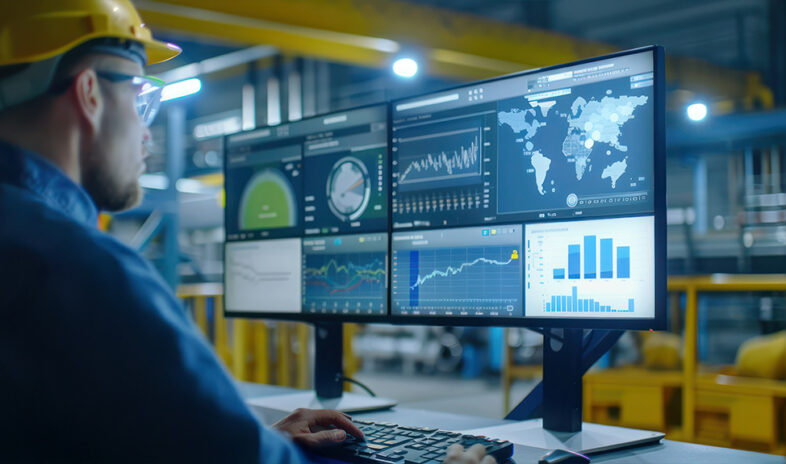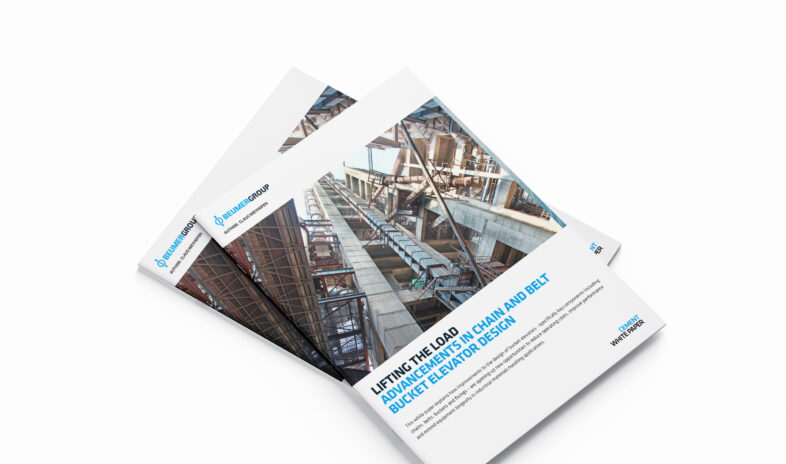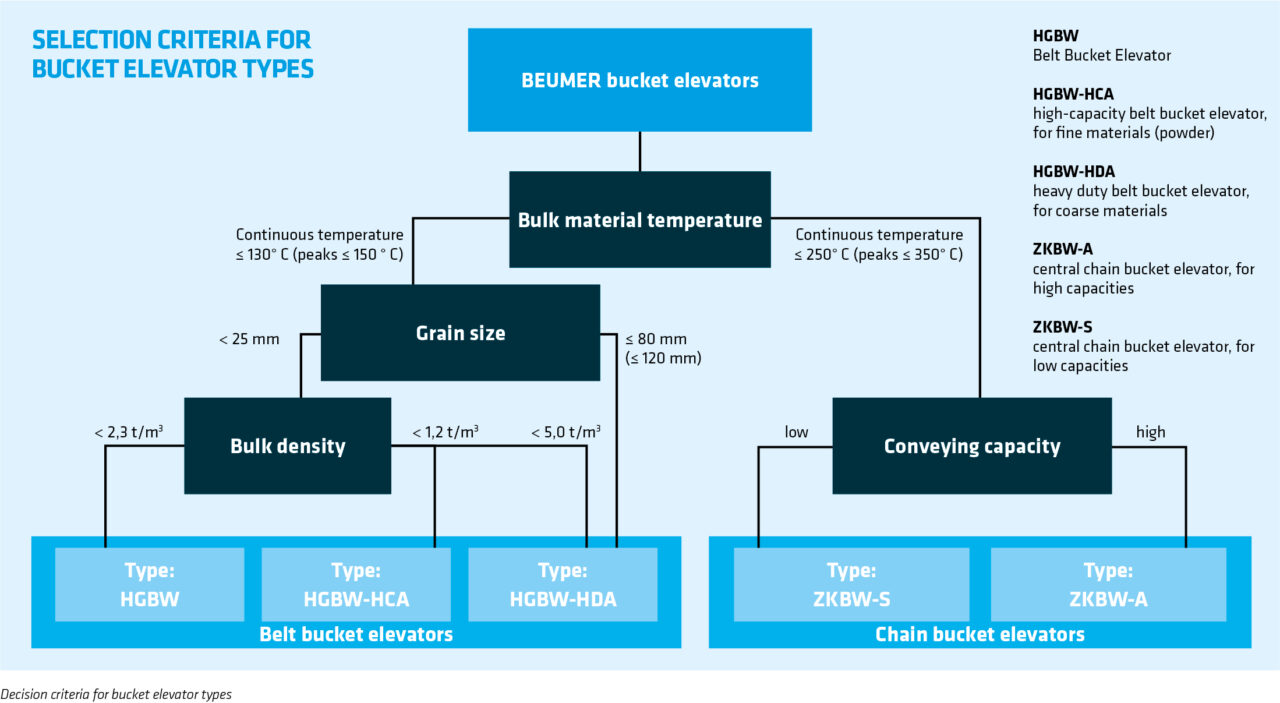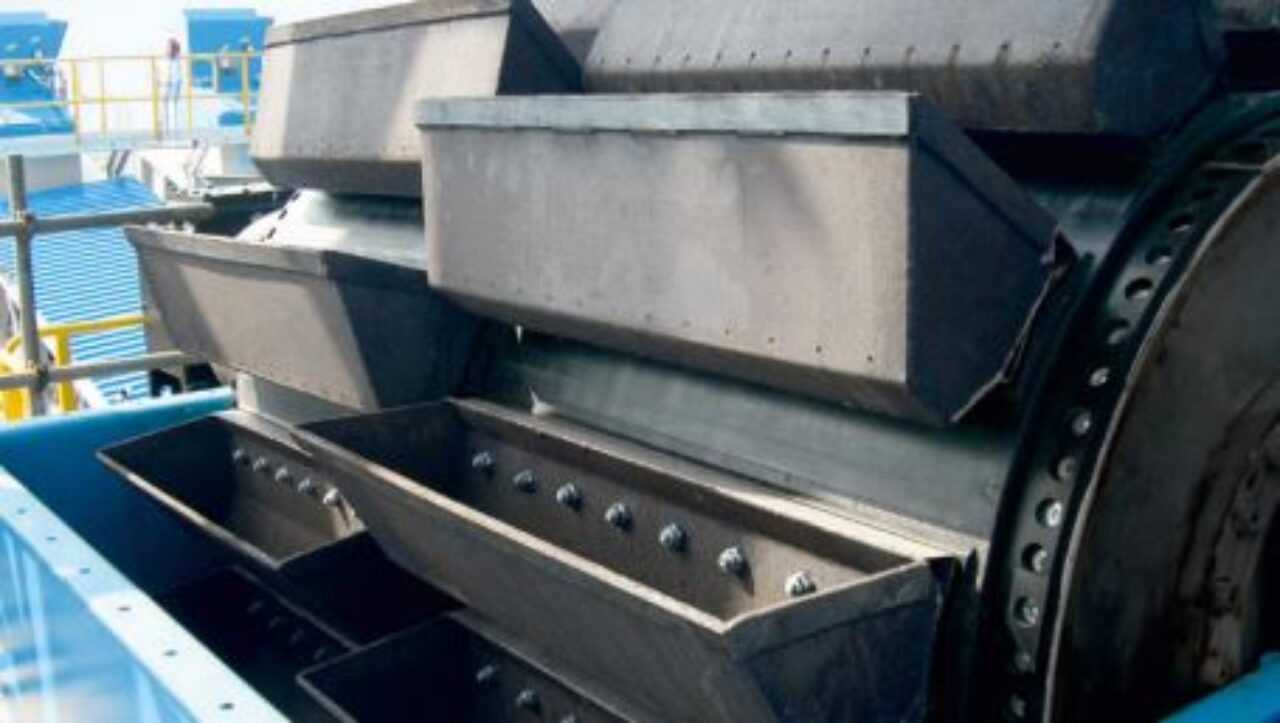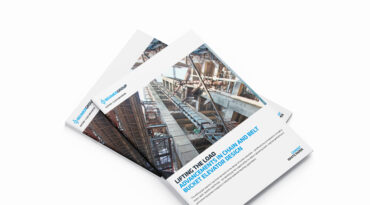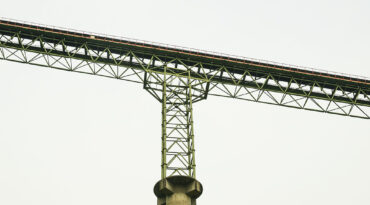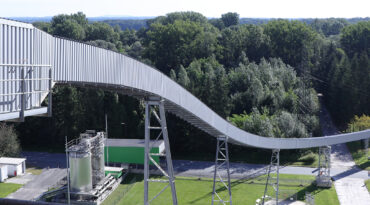By Claus Weyhofen
Bucket elevators are essential for the vertical transport of a wide range of bulk materials, from powders like raw meal and cement to coarse materials like clinker. Using a belt or chain mechanism, these high capacity, heavy duty machines rely on a combination of centrifugal and gravimetric forces to eject the bulk material out of each bucket when it reaches the desired height.
Belt and chain bucket elevators use different transmission mechanisms. Each has its own advantages and disadvantages. In this article, we’ll dive a bit deeper into the differences between a belt bucket elevator and a chain bucket elevator so that you can better decide which one is the right choice for you.
Should I Choose a BELT Bucket elevator or a CHAIN BUCKET?
A belt bucket elevator uses an endless belt with a pulley, from which the buckets are suspended. The belt comprises a series of steel cords, which take the load, encased in rubber plates to protect the steel from environmental impacts. Centre distances of up to 250 m are possible, with conveying capacities in excess of 3000 m3/h to a height of 200 m. This technology typically exhibits low wear, and higher conveying capacities, making it a cost-effective choice in terms of both CAPEX and OPEX. Belt bucket elevators are also relatively smaller than a chain belt equivalent, which saves on steelwork and so reduces environmental impacts.
A chain bucket elevator uses an endless chain with a non-toothed sprocket and the buckets are attached by means of vibration-absorbing angular bucket holders to the chain. Centre distances of 70 m or more are achievable, with conveying capacities of up to 1900 m3/h to heights of around 70 m. Chain bucket elevators really come to the fore in transporting hot, abrasive, or granular bulk material, such as limestone, slag, and refuse derived fuel (RDF). However, chain bucket elevators are generally more expensive to purchase and to maintain and have a shorter lifespan under the same strain when compared to belt bucket elevators.
Ultimately, the selection of belt or chain bucket elevator comes down to three simple criteria: temperature, grain size, and material density.

